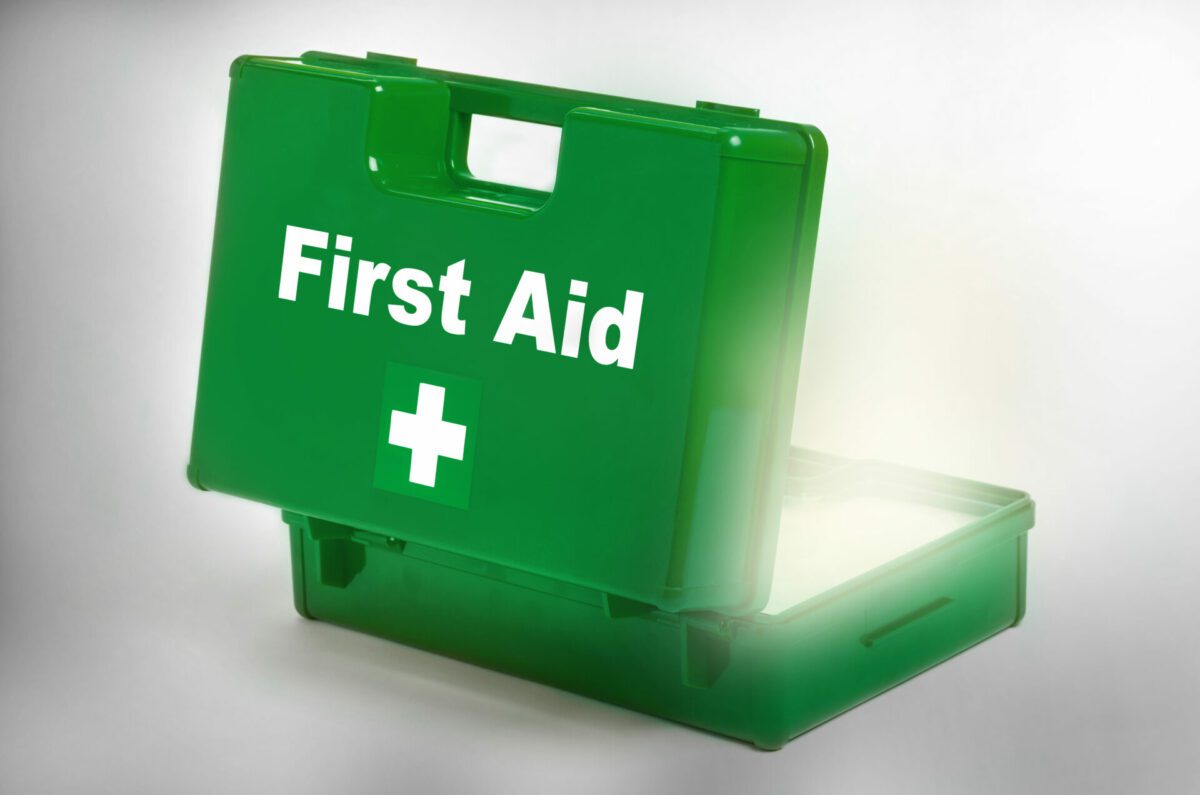A workplace first aid kit should be fully reviewed and checked every three months

Is your first aid kit safe to use?
Did you know that plasters and bandages have an expiry date? Have you ever worked out how much time and resources are spent over the course of a year, checking that your first aid kit is up to date, fit for purpose and ready to use? Probably not; but the medical recommendation is that a workplace first aid kit should be fully reviewed and checked every three months.
The Law states that an employer must ensure that employees get immediate help if taken ill or injured at work. A businesses reputation and liabilities are at risk if the first aid requirements are not being managed correctly and the provision does not meet the expected, mandated standards and obligations.
So with this in mind, I will occasionally ask to check a client’s first aid kit to see if it is fit for purpose. Most often it’s not. Items will be missing, out of date, in a muddle so they cannot be swiftly found, or with damaged packaging and therefore rendered unusable. In addition, not all of the essential medical consumables specific for the industry’s workplace risks are always included and present. So, immediate help could not be given. The first aid provision for the workplace is not response ready.
Now think about the Health and Safety Executive requirements. They state that a workplace, regardless of there being one person or one thousand, requires an appointed person to be in charge of all first aid arrangements. This includes the quarterly first aid inventory check. The review should ensure that all products are within their expiry date, that any used equipment is replaced, the inside of the first aid box is clean; and that the equipment is well organized and easy to see for quick emergency use. This is making sure that the first aid kit is safe to use! Somewhat ironic that the equipment you use to resolve a medical incident, may not in itself be safe.
A sometimes unknown fact is that plasters and bandages have an expiry date. If they are out of date, they are not guaranteed to be sterile, which is imperative when covering an open wound. The majority of plasters, unless specifically designed to mitigate the problem, loose their adhesiveness over time, and especially as they move towards their expiry date. Most will agree that the first and foremost role of a plaster is to stick and provide protection; so, do you make sure that all of your first aid kit plasters will actually do this?
Do you check to see if your first aid box is clean? In an emergency situation the box and therefore the contents can become dirty or soiled. The cleaning of the box to prevent ongoing contamination should be included as an integral part of the regular health and safety workplace checks. For convenience, the use of a protective pouch can help to shield the contents and enable the easy organisation of the first aid kit too.
And finally, after the workplace risk assessment identifies the key first aid needs; there is then the more complex challenge of referring to the Health and Safety Executive’s First Aid at Work Guidance on Regulations. This recommends that an employer refers to the British Standard BS8599 -1:2019, which includes recommendations for first-aid kit content. To ensure all first aid obligations are covered, some knowledge is required and it can become onerous to facilitate.
So what is your commitment to your first aid provision? Will your first aid kit enable an untrained person to prevent a minor injury becoming a major one; and possibly even save a life?
As an employer, you are responsible for making sure it does.
By Reuben Gilmore, Sales Director at Aero Healthcare UK











Responses